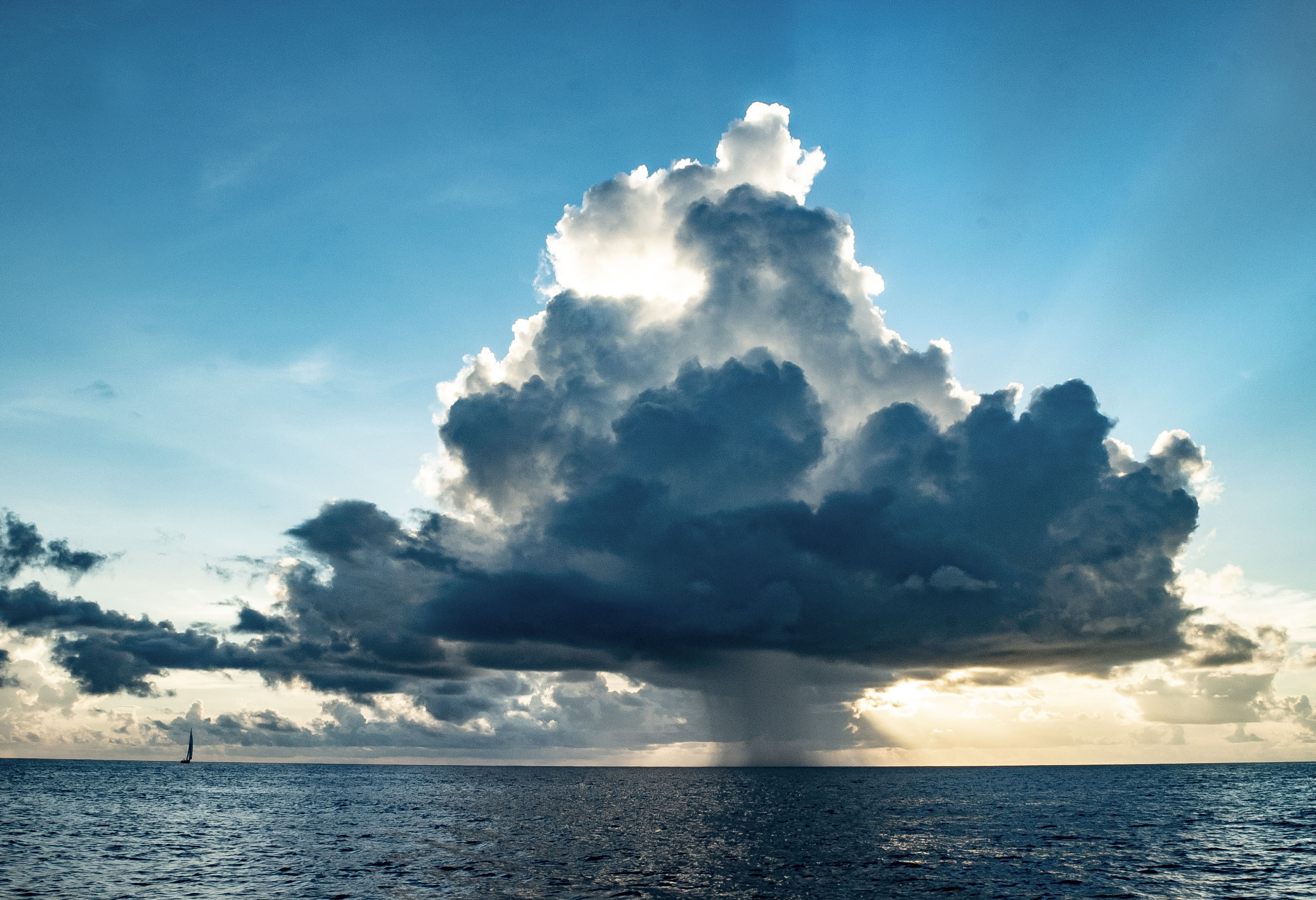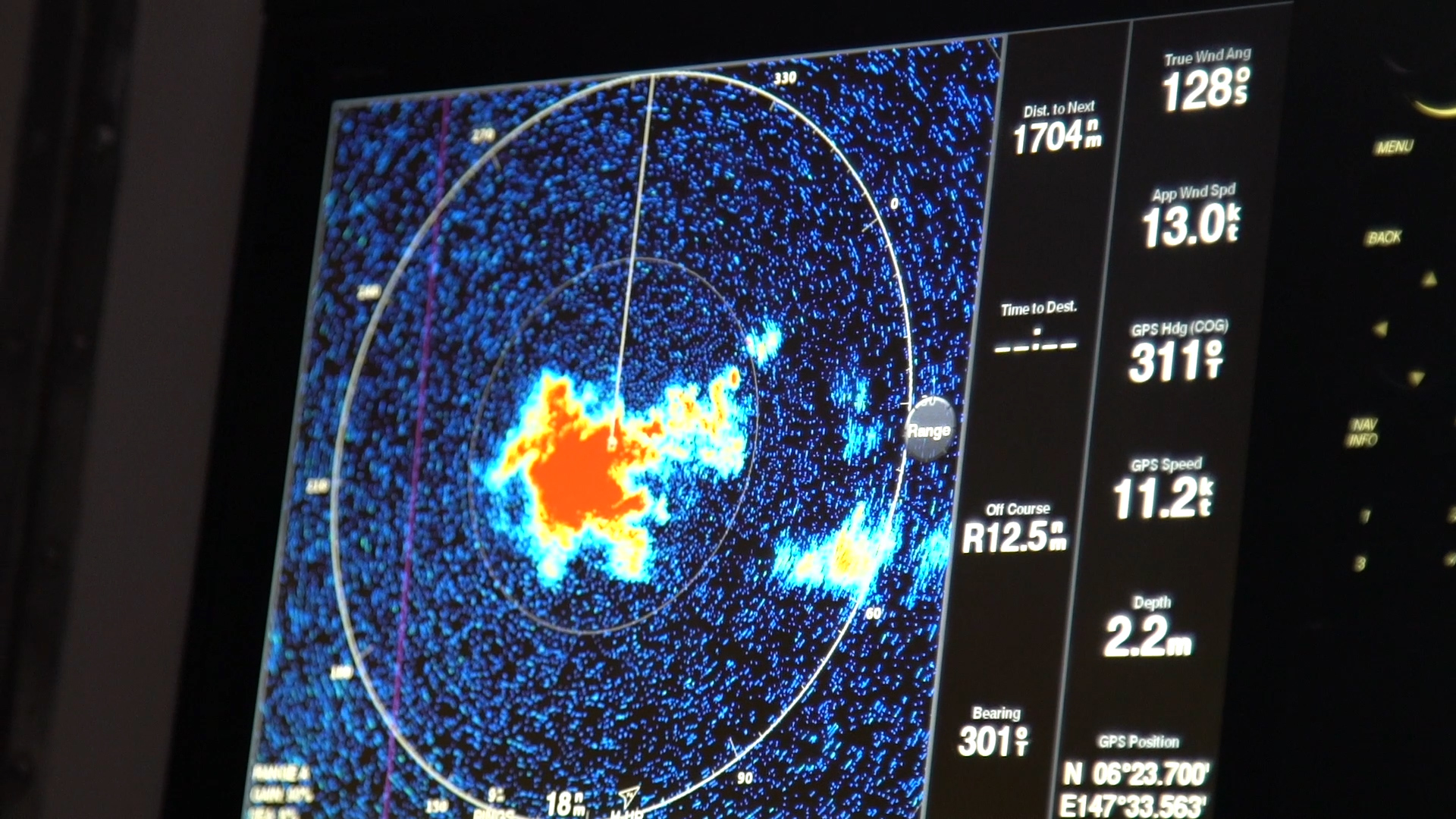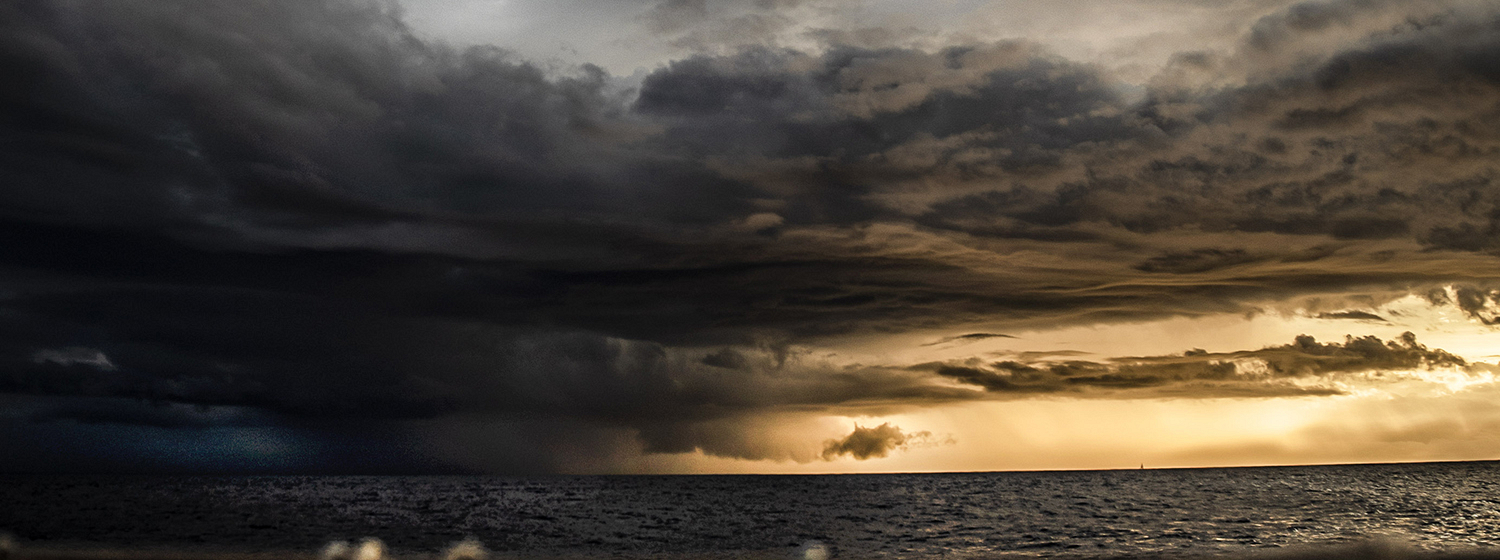Tropical Squall - pot of trouble or welcome relief?
04 June 2020
During the Clipper Race Circumnavigation, temperatures can soar as the route sees crew racing through the tropics and across the equator. With little to no break from the intense sun and the frustrations light and fickle wind bring, these conditions test crew both mentally and physically. However, the tropics are also known for squalls, usually short lived and isolated periods that bring torrential rain, wild wind shifts and gusting wind speeds that can cause serious damage but also bring welcome relief from the heat and sometimes a tactical advantage.
Clipper Race Meteorologist and all round weather guru, Simon Rowell, explains: “A squall is a localised pot of trouble for sailors.
“Especially in the warmer parts of the ocean, in areas like the tropics, what you get is localised areas of warm, humid rising air. This is what forms your squall cloud. If that cloud develops to be quite large, then underneath it you have air rising up, which is feeding moisture into the cloud. And then around the outside you have colder air coming down and as warm air rises, it cools down and drops its moisture, which is why you often get rain as well.

“It is the air coming down from the edges of the squall that makes things interesting for sailors. What the downdrafts do is effectively push air away from the base of the cloud, and that air being pushed away from the base adds on to whatever the normal wind is. So, if you have a squall coming from behind, you are likely to have more wind and one in front, you get less wind.”
Whilst some squalls can take you by surprise with their strength, there are indications to be found when developing clouds are spotted on the horizon. And as squalls are often found in lines, they can be predicted when in areas of high activity. Skippers and crew are always on the lookout for changing conditions. During the day, the squall clouds can easily be spotted but at night a couple of sweeps of radar can help with identification; when squalls are raining they show up on radar. Once identified the team can prepare for what is to come with the Skippers deciding whether there needs to be a change of course or a reduction in sail plan.

If the preparations are made in time then a squall can bring a period of relief from the debilitating heat. For those on board, the cooler air brings new energy, the rain an opportunity for a rare freshwater shower, the increased wind can break the mood and bring a smile to the faces of the crew. A squall not only clears the air in the most literal sense, it also brings a fresh outlook and potentially a lift in the right direction.
Here, the crew on board Visit Sanya, China navigate a squall during Leg 5, racing from the Whitsundays towards Asia. First Mate Jorge Infante Llorca, narrates as the crew go from searing temperatures to enjoying the welcome relief of the colder air and a rain shower.
Depending on a team's position to the squall, they can sometimes make small gains utilising the wind increase and shifts. Simon goes on to say: “Quite often tropical squalls come in lines. If for example your ideal course is closer to port, but due to the wind direction you cannot pinch any higher, you can organise your route so that the line of squalls comes down your starboard side. Then every time a squall comes along you will get a little nudge onto port to help your course.
“Playing under clouds can be quite useful. If you get it right, you can keep grabbing those extra few boat lengths and they all add up.”
Squalls vary in size and intensity and are not only found in the tropics as they can also be embedded in weather fronts. Whilst we see the Visit Sanya, China team safely navigate a squall during Leg 5, these weather features keep Skippers and crew alert and racing interesting during many legs of the circumnavigation.
Join The Race